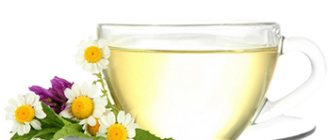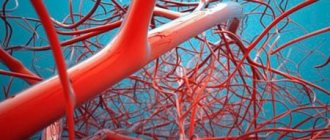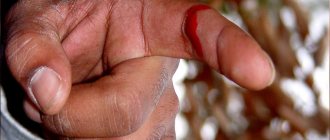Today, people, due to their hard work, are increasingly suffering from varicose veins. The reason for this may be heredity, work associated with heavy lifting, sedentary work, poor diet, and high-heeled shoes. Horse chestnut for varicose veins, the recipe for which is described in many publications on traditional medicine, will undoubtedly help get rid of this sore.
Related articles:
Photo and description of horse chestnut How to prepare and take horse chestnut tincture How to use horse chestnut extract Horse chestnut - use in folk medicine Red root: uses and contraindications
To combat varicose veins or reduce the degree of pain, use all parts of the plant: flowers, fruits and leaves. It is not difficult to prepare medicines from them at home.
Useful properties of chestnut for varicose veins
Treatment of pathology with horse chestnut is that it strengthens vascular and capillary walls and thins the blood. As a result, the likelihood of developing venous pathology is reduced.
Chestnut contains:
- flavonoids;
- vitamin P;
- saponins;
- tannins;
- sterols;
- routine;
- astragalin;
- coumarin;
- lutein
The effect of chestnut is healing due to the presence of complex combinations in it - aescin, as well as esculin. The effect on the veins of the latter is as follows:
- The likelihood of blood clots decreases.
- The likelihood of capillary fragility is minimized.
- Swelling decreases.
- Venous blood flows faster.
- Antithrombin synthesis is normalized.
Escin acts on veins as a venotonic and angioprotective agent. In addition, it thins the blood, making it not too viscous.
The healing properties of chestnut make it possible to fight such serious vein pathologies as varicose veins and achieve good therapeutic results.
What you need to know about the disease
In the process of varicose veins, irreversible pathological changes occur, when an increase in the lumen of the vein, stretching, and thinning of the walls are observed. Elongated, deformed vessels are grouped into nodes and acquire fragility and permeability. The transport of venous blood to the heart is disrupted, its stagnation forms, against which deep ulcers and blood clots arise.
As the disease progresses, it is divided into 5 stages.
- Telangiectasia - vascular spots, “stars”, “networks” appear.
- Reticular varicose veins - the saphenous veins expand due to excessive pressure and become convex and visible.
- Enlargement of the main veins - large vessels protrude above the skin, swollen nodes and dilated areas are visible.
- Venous insufficiency - the cellular nutrition of the soft tissues of the extremities is affected, cyanosis, darkening (hyperpigmentation) of skin areas, and swelling are observed. The functioning of the venous valves is disrupted, causing blood to flow in the opposite direction (reflux).
- Trophic ulcers - there is a failure of normal blood circulation in the extremities, decay products of dead tissue accumulate, and defects in the skin of the lower leg are formed in the form of wounds that do not heal for a long time.
With varicose veins, damage to the lower extremities in stages 3–5 carries the threat of thrombophlebitis and accumulation of blood clots. The formed clot can block the lumen of the main hip vessel and cause phlebothrombosis. Having come off, it moves through the vein to the lungs, causing thromboembolism - a life-threatening condition. Phlebologists, diagnosing stages 4 and 5 of varicose veins, often insist on surgical intervention.
Horse chestnut for varicose veins is effective only in the 2 initial phases of venous pathology, when a person feels “heavy legs” syndrome. It will be useless in the future.
Contraindications
Horse chestnut for varicose veins has pronounced medicinal properties. It is for this reason that it has a contraindication, or rather several. The main ones are listed below:
- Breastfeeding the baby.
- Diagnosis of hypotension.
- Low blood viscosity (taking medications based on horse chestnut thins it even more).
- Kidney failure.
- Pregnancy in the first trimester (it is prohibited to take drugs that are taken orally).
- Gastrointestinal diseases in acute or chronic form.
IMPORTANT
! Before consuming horse chestnut, it is recommended to consult your doctor so as not to harm the body.
You should also tell your doctor about all the medications you take so that he or she can coordinate your treatment. After all, many drugs taken simultaneously can enhance or, conversely, reduce each other’s properties.
Contraindications to the use of drugs against chestnut varicose veins
Chestnut for the treatment of varicose veins is not equally useful for everyone. The same spectrum of active substances contained in the plant, which is used specifically for the treatment of blood vessels, can have a negative effect on patients who have contraindications to their use.
- Chestnut-based medicines should not be used by women during pregnancy and breastfeeding;
- patients suffering from reduced blood clotting;
- persons with low blood pressure;
- patients with impaired renal function;
- in the presence of internal bleeding;
- for acute and chronic manifestations of disorders of the gastrointestinal tract.
With all the “arsenal” of classical methods of treating vascular diseases, the variety of medicines, traditional medicine, despite the negative attitude towards itself from official medicine, sometimes remains the only hope for a cure for varicose veins for many people.
And, nevertheless, any treatment, including the treatment of varicose veins with horse chestnut, must first of all be agreed upon with a specialist.
When to collect and how to prepare
ATTENTION
! It is very important to carry out the collection and subsequent preparation of the material according to the rules, as this allows you to increase the effectiveness of the finished drugs significantly.
It is recommended to harvest chestnuts only when the fruits have become round, large in size and have begun to ripen. Leaves and flowers are stored in the spring when the trees bloom, since it is at this time that they contain the most beneficial properties.
To make healing ointments, decoctions, and tinctures to combat varicose veins from horse chestnut, you can use almost all parts of this plant (fruit, its peel, leaves, flowers and tree bark).
Many recipes call for peeling the green skin off the chestnut. This is not difficult to do; an ordinary knife is used for this.
To obtain a pulp from fruit seeds, you need to grind them in a meat grinder. To obtain a more uniform consistency, the resulting mixture is passed through a meat grinder again or all particles are thoroughly ground in a mortar.
If drying is required, it is carried out within a month. During this period, the drying particles must be stirred to prevent the formation of mold.
The fruits and flowers of the tree are dried indoors.
Baths and tubs
Not only for dilated veins, but also for myalgia, neuralgia, rheumatism, gout, and skin itching, baths with horse chestnut - from seeds or bark - are effective. Boil 1.5 kg of ground raw material in a bucket of boiling water for 30 minutes. Strain and pour into the bath.
To prepare sitz baths for hemorrhoids, you will need to make a mixture of dry raw materials. You need to combine: 3 servings each of chestnut seeds, chamomile (flowers), sage herb, 5 servings of oak bark. 4 tbsp. l. pour the collection into a thermos, pouring 3 cups of boiling water. Strain after 2 hours. Bring the volume of infusion to 2 liters with water (boiled and cooled). Take the bath for at least 15 minutes.
Decoction
To get a greater effect, it is recommended to use complex therapy, which includes other methods of using the fruit. Chestnut treatment can be based on healing decoctions.
Prepare a mixture of 2 tablespoons of dried leaves and 5 chopped fruits. Mix it well and pour 0.2 liters of boiling water. Place the resulting liquid in a water bath and simmer for about 30 minutes. While hot, strain the resulting broth and dilute with water to a volume of 0.2 liters.
Forecasts
The effect of treating varicose veins with homemade ointments, tinctures, and compresses based on horse chestnut is noticeable either when used in the initial stage of the disease or with complex therapy . Home remedies have a more gentle effect, so therapy is extended over a longer period.
More effective is a combination of several treatment methods - physiotherapy, diet, exercise therapy and maintaining a healthy lifestyle. Local medications are best used with compression therapy (wearing bandages, stockings, etc.).
Tincture recipes
Various tinctures can be prepared from parts of the horse chestnut tree to combat varicose veins. On the Internet there are several options for making such products from different parts of horse chestnut. Below are simple recipes on how to make chestnut tincture.
From flowers
We present several of the most popular recipes for chestnut flower tincture:
- Alcohol tincture. Dried flowers weighing 100 grams are poured with 1 liter of vodka or alcohol. Leave for 2 weeks in a dark, dry place. Drink the alcohol infusion three times a day, 25 drops before meals for a month. In cases where the disease is advanced or in severe form, you can use the tincture for 2 months, then do not drink it for a month (break), and then take the course again.
- Grind fresh chestnut flowers without pistil and stamens, and then squeeze the juice out of the resulting pulp. Mix the resulting liquid with alcohol. Take 1 month.
- Mix chestnut flowers in the amount of 1 dessert spoon with 0.5 liters of boiling water. Pour the mixture into a thermos and leave overnight. Take half a glass twice a day after meals.
From fruits
We present the most popular recipe for chestnut tincture.
Chopped chestnut fruits weighing 50 grams, vodka volume 500 milliliters. Mix the ingredients. Leave the resulting mixture for 10 days. In the future, take 5-10 drops 4 times a day until you get rid of varicose veins.
Tincture according to Bolotov
REFERENCE
! Chestnut tincture for varicose veins with alcohol is especially popular. To prepare it, you need the fruits of the tree. This remedy is called horse chestnut tincture for varicose veins according to Bolotov.
Boris Bolotov, in addition to his main activity, was involved in the development of non-standard recipes for the treatment of various diseases, including varicose veins.
To prepare the tincture according to this recipe, you need to: chop the inner nut, peeled, weighing 10 grams, transfer it to a brown glass bottle and add 100 grams of vodka. Infuse the resulting mixture in a cool, dark place (in the basement or in the refrigerator, after wrapping it in dark paper) for 14 days. Next, the tincture must be filtered and consumed 30 drops three times a day.
The course is 30 days. However, you can take the tincture longer if you initially reduce the daily dose by half.
Pharmacological effects and medicinal capabilities of chestnut
According to their biochemical composition, horse chestnut fruits are a real depot of some vitamins (E, group B, P), purine compounds, tannins, anticoagulants and angioprotectors. The last two groups of substances determine the main pharmacological value of chestnut. These include more than two dozen flavonoids, saponin and escin. Together they determine the main therapeutic effects of traditional chestnut medicines for varicose veins and other types of venous pathology:
- Blood thinning by reducing its viscosity;
- Strengthening and restoration of the wall of venous vessels;
- Reduced vascular permeability of the microvasculature;
- Stimulation of blood outflow through the venous bed;
- Stimulation of the production of factors of the blood anticoagulation system (antithrombin system);
- Indirect and direct anti-edematous effect.
Each of the therapeutic effects is a scientific aid for various kinds of chestnut tinctures for varicose veins of the lower extremities, thrombophlebitis, venous and lymphovenous insufficiency, and impaired patency of the deep veins.
Rub recipes
Varicose veins can be treated with another remedy based on horse chestnut. The rub is made from both dried and fresh fruits. Below are popular recipes for chestnut rubs.
From fresh fruits
Cut the fruits into 4 parts and place them in a jar. Fill it to the top with vodka and close the lid tightly. The resulting mixture is infused for 3 days in the sun, then 40 days indoors at a temperature of 20-25 degrees. The resulting product is used for rubbing diseased veins and joints.
From dried fruits
You will need dried chestnut fruits (1 part) and alcohol (10 parts). Combine the ingredients and leave for 20 days. Use this rub to rub sore areas on the legs to relieve swelling and pain.
If your joints hurt
Chestnut alcohol extract is used as an anti-inflammatory agent to relieve joint pain.
Chestnut tincture for joints for external use (treatment of arthritis, rheumatism) is prepared quickly: 50 g of seeds in a shell are crumbled and poured with vodka - 0.5 liters. After two hours of infusion, the rubbing is suitable for rubbing into sore spots.
Chestnut tincture for joints affected by arthrosis: the fruits are cut into 3-4 parts, poured into a jar to the top and filled with vodka to the brim. Close the lid tightly and leave in the dark for 3 weeks - the medicine is ready. The liquid is drained and used for compresses on the joints.
Ointments
A variety of preparations based on horse chestnut are creams and ointments used as an external means of eliminating varicose veins. Making ointment at home is not at all difficult. Below are the most popular recipes for making ointments:
- Grind five chestnut fruits, add 5 tablespoons of flowers to them. Pour 0.5 liters of oil into this mixture. Boil the resulting substance in a water bath for about 2 hours. Later you need to strain it and let it cool. Keep the ointment in the refrigerator;
- Pour the crushed flowers of the plant with oil and leave in a cool place for a while. Next, boil the mixture using a water bath. Store the strained substance in the refrigerator.
Preparation of the ointment allows the use of absolutely any oil: almond, vegetable, olive, peach or some other. Rub the ointment into the places where pain is felt three times a day. Thanks to chestnut ointments, you can eliminate inflammation, soothe the skin and swelling on the legs. The ointment can be stored for no more than 14 days.
Chestnut-based ointment and cream: how to use
If such products are purchased at a pharmacy, then you should simply study the instructions for their use. If you make such drugs yourself, you need to remember the rules for their use:
- applied to the lower extremities specifically in those places where there is severe pain or protruding nodes are visible;
- the procedure is carried out at least 3 times a day;
- If we are talking about evening treatment, then before applying the ointment or cream, it is advisable to put a compress of chestnut tincture on your feet.
Pharmacy drugs
Horse chestnut has a tremendous healing effect in the fight against varicose veins. It is for this reason that it is used in the production of pharmacological agents that are designed to eliminate this pathology. The most popular of them are:
- Gel Venitan.
- Aescusan.
- Escisan.
- Rectactive.
- Herbion Esculus.
These products are designed to help correct blood circulation and keep veins toned.
It is worth noting that these medications will not completely eliminate the disease if a blood clot has already formed in the vein, but they will improve the patient’s overall condition. In addition, they can be used as a preventive measure.
The use of one or another method in the fight against varicose veins should be agreed with a doctor. It is recommended to take care of the health of your feet from a young age and prevent thrombophlebitis from developing.
What determines the effectiveness of horse chestnut in the treatment of varicose veins?
Why is horse chestnut so useful for treating varicose veins? It turns out that many chemical elements that make up the flowers, fruits, leaves, bark and even roots of horse chestnut have pronounced therapeutic properties:
- glucosides – relieve swelling of the legs, stop ongoing inflammatory processes, improve capillary permeability and increase blood flow;
- esculin (extracted from horse chestnut bark) – promotes the synthesis in the body of the protein factor antithrombin, which prevents the formation of blood clots;
- escin – increases the tone and elasticity of the walls of blood vessels, reduces capillary fragility, increases venous blood flow and fights blood stagnation;
Most of the well-known pharmacological drugs against varicose veins are made based on chestnut extract: Escisan tablets, Escusan oral solution, Venitan gel, etc.
Despite the fact that treatment of varicose veins with horse chestnut involves the use of pharmaceutical products, many patients prefer to make tinctures, ointments and decoctions from this plant at home.










